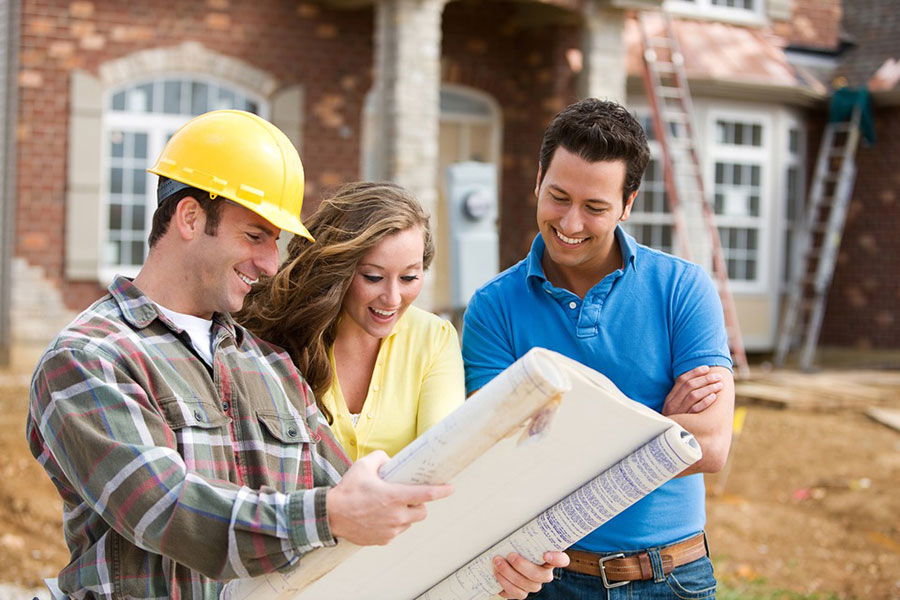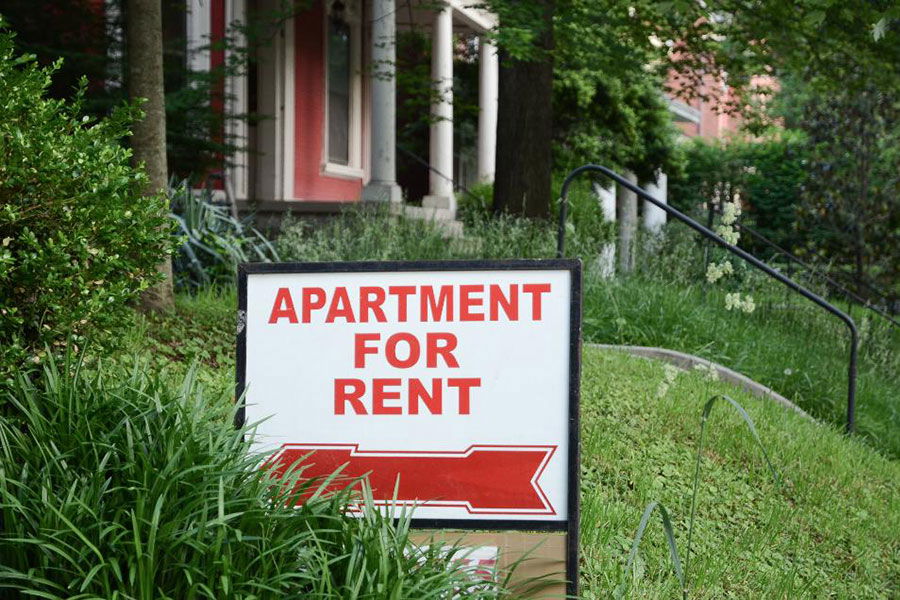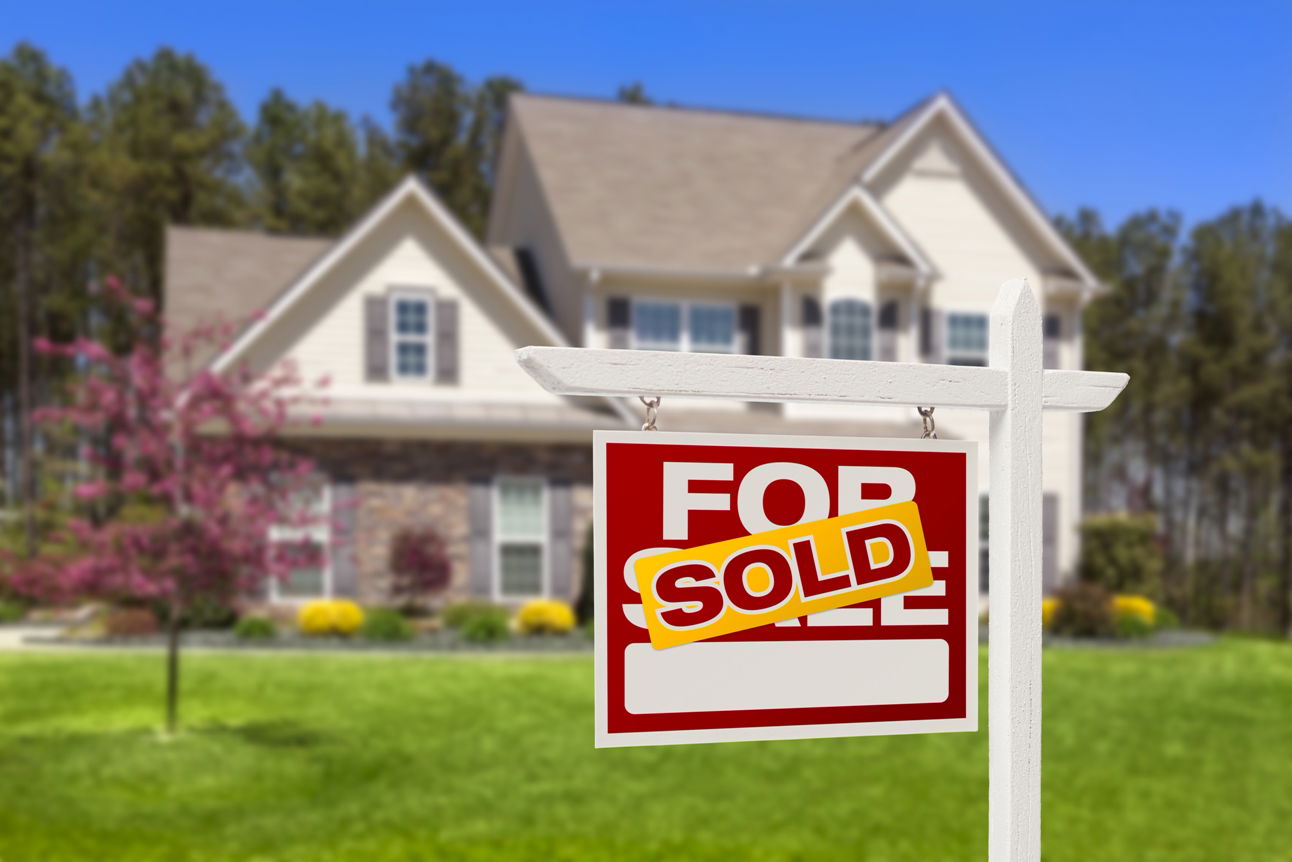Buying a new home often raises the question: should you buy or build? Building a home has benefits like choosing a floor plan and design that suits your family, having input on materials, paint and appliances. However, it also takes months to construct, whereas a new home is ready for immediate move-in.

The perception that building a custom home is too expensive also deters many. But is this assumption grounded in reality? This article takes a closer look at the cost of custom home building, exploring the feasibility and affordability of this dream for the average homeowner.
What does it cost to build a house?
Is building a house truly more expensive than buying one in today’s housing market? It’s a question that often leaves people scratching their heads in confusion. The answer, though, is not as straightforward as you might think!
The National Association of Home Builders (NAHB) reports that on average, building a 2,776 square foot, single-family home can set you back $427,892, or around $154 per square foot. But there’s much more to the story than just this average number. So, what are the biggest cost factors to keep in mind when building your dream home?
- Site preparation and excavation
- Foundation
- Size of your home
- Labor
- Framing
- Exterior
- Interior
- HVAC, plumbing, and electricity
- Building permits
- The final sales price
Site Preparation and Excavation
According to NAHB, the average price for a completed lot stands at a considerable $91,996. However, keep in mind that this figure is just a baseline. It may differ greatly, depending on various factors such as the dimensions of the lot you intend to purchase and the location of the market you reside in.
For example, if you opt to acquire a lot in an urban setting, where land is scarce and demand is high, you may find yourself paying more than someone who chooses a rural area. In rural areas, the cost of land is comparatively lower and the availability of land is greater. As such, one could obtain more land for their money when opting for a rural location.
To arrive at a better understanding of the cost of a finished lot in your specific area, you need to thoroughly research the local market and factor in the relevant variables.
Foundation
Once you’ve purchased the lot, you’ll need to pour the concrete foundation. According to NAHB, this costs an average of $25,671. And the more materials you use, the quicker these costs will add up.
The Size of Your Home
This one is pretty self-explanatory; large houses cost more money than small houses. The bigger your home, the more the construction costs will add up. And a larger home will require more building materials, which will also increase the overall costs.
Labor
Labor costs account for about 40% of the total cost of building a house. Costs vary by region. Other factors that determine labor costs include the size and complexity of the house and the contractor’s buying power. Bigger homes, and homes that require more customization, will cost more than smaller homes because of the way they’re built.
Framing
According to the NAHB, framing is one of the most expensive parts of building your own home. On average, it costs $41,123 to frame the house. The only thing you’ll spend more on is the interior finishes!
During the framing process, the workers are essentially constructing the skeleton of your home. The workers will build the roof and necessary structures to support your home.
Exterior
The exterior is the supporting structure that supports the roof and keeps you safe from seasonal changes. And the siding you choose for the exterior of your home will have a significant effect on price. For instance, a custom stone exterior will have a higher cost per square foot than vinyl siding.
Interior
You’ll be amazed at how expensive it is to purchase the interior of your home. The interior includes things like cabinets, doors, mirrors, countertops, lighting, and more.
When it comes to choosing your interior, opting for many upgrades will increase the final price tag a lot. Pricey upgrades include things like marble or granite countertops, stainless-steel appliances, or opting for hardwood floors instead of carpet.
These are all things that will make your home look nicer, and will even increase the value of your home. But it will add a considerable amount to the final price tag.
HVAC, Plumbing, and Electricity
If you want to actually be able to live in your home, then you’re going to need to install major systems like your HVAC, plumbing, and electricity. And needless to say, this is not the category where you want to try to cut costs.
Building Permits
To build a new house, you’ll need a building permit. The average cost of a building permit is around $1,000 – $2,000. Costs can vary by location.
Average Cost of Building a House
As of 2023, the average cost of constructing a single-family home in the US varied significantly. The National Association of Home Builders reported an average cost of $392,241, or $153 per square foot. HomeAdvisor’s estimate, as of January 2023, was slightly lower at $308,588.
Additionally, the U.S. Census Bureau indicated that the average sales price of a new single-family home in May 2023 was $487,300, with a median sales price of $416,300.
These figures demonstrate the considerable variability in home-building costs, influenced by factors like location, size, design, and material quality. Keep in mind that these are average estimates and actual costs may differ.
Regional Variations in Cost
The cost of building a house can vary significantly depending on the region in which you plan to build. For example, urban and coastal areas tend to have higher construction costs.
This is due to factors such as more expensive land values, stringent building regulations, and higher demand for labor and materials. On the other hand, building a house in rural or less populated regions is usually less expensive.
5 Steps to Begin Building a House
If you feel like building a new house could be the right choice for you, here are five steps you can take to get the home-building process started.
1. Come up with a budget
You may feel ready to start designing your dream home, but it’s best to come up with a budget first. A budget will help you determine what you can actually afford, and it will make it easier once you begin working with the builder.
2. Get the financing straightened out
Once you know what you can afford, it’s time to figure out your financing. Fortunately, financing a new home is fairly similar to taking out a mortgage on an existing home.
You’ll start by getting preapproved by a bank or lender. During the preapproval process, your lender will check your credit score and evaluate your assets and liabilities to determine what they’re willing to lend you.
3. Choose your lot
Once you know your budget and have worked out the financing, it’s time to choose your lot. You can either purchase a lot in an existing neighborhood, or you can build land in an area that you plan to build on.
If you purchase land to build on, you’ll want to talk to the builder about any additional costs that come with this. These costs include things like leveling the ground or cutting down trees.
4. Choose your floor plan and design
When you’re choosing your floor plan and design, you’ll consider things like how many bedrooms you want, and the overall layout of your home.
Most home builders will have predesigned house plans you can choose from. But if you’re looking for numerous customizations, it’s a good idea to work with an architect to create a housing design.
5. Stay involved in the process
Unless you’re a contractor, you’re likely outsourcing the building of your home to someone else. But it’s still a good idea to be involved in the construction process.
Ask your builder to keep you in the loop, and provide opportunities to see the home during various building stages. These walk-throughs will give you a chance to ask questions and point out any problems that you see arising.
Ways to Reduce the Cost of Building a House
Building a house doesn’t have to break the bank. There are ways to reduce costs without sacrificing quality or functionality. Several strategies include choosing materials and designs that are both aesthetically pleasing and budget-friendly, hiring a cost-conscious contractor, finding innovative methods to minimize energy costs, and even embracing a do-it-yourself philosophy.
By exploring these avenues, home-builders can reduce expenses and their dream home can still embody unique style, be functional, and fulfilling while being cost-effective.
Choosing Cost-Effective Materials and Designs
Building materials often contribute heavily to building costs. Choosing affordable materials and designs can help cut these costs. Substituting asphalt shingles for slate roofing can save thousands.
In addition, adopting energy-efficient designs, like Passive House, can also lead to long-term energy savings.
Hiring a Cost-Effective Contractor
Reducing building costs can also be achieved by selecting an affordable contractor. Options include contractors who are budget-friendly or offer reduced rates for certain services. Hiring a general contractor for all construction stages can save money compared to hiring multiple contractors.
Finding Ways to Save on Energy Costs
Building an energy-efficient home can result in long-term cost savings as it needs less energy for heating and cooling. This is done by utilizing energy-efficient appliances, properly insulating the house, and installing energy-efficient windows.
Installing solar power systems can further cut energy expenses and even generate income by selling surplus energy to the grid.
Considering a DIY Approach
Lowering building costs can be achieved by tackling some tasks yourself, like demolition, site preparation, and even framing and finishing. However, electrical and plumbing work should be handled by professionals.
Consider the time and effort required before choosing a DIY approach, as it can be demanding and time-consuming.
Is it cheaper to buy or build a house?
So, now that you understand how much it costs to build a house, and what goes into starting this process, is it cheaper to buy or build a home? The truth is, that depends on several factors.
The estimates will vary depending on what averages you’re looking at. And many of the home costs are entirely within your control.
For instance, you get to choose your own lot, the size of your home, and how much you spend on things like appliances. So, if you want to find ways to save money on your building a home, you certainly can.
The most important thing to do is to consider your budget, and then what you’re hoping to get out of your home. If you know you can afford to build a house, and it’s worth it to you to pay for a custom design and floor plan, then it may not matter what the cheaper option is.
Bottom Line
Hopefully, this article has shown you that it’s entirely possible for you to build your own house. This is true even if you’re a first-time homebuyer.
To get started, you should carefully review your budget to determine what you can afford. Then it’s a good idea to get preapproved for financing with your lender. From there, you’ll be all set to begin working with a builder and start designing your dream home.




